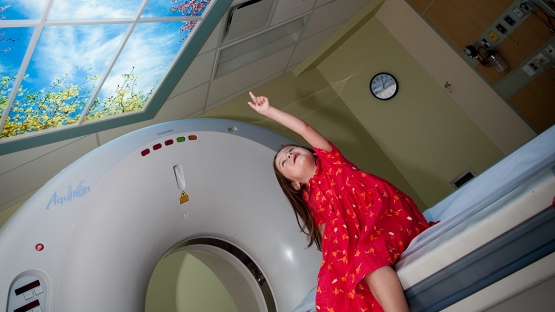The tenth IAEA webinar on radiation protection in medicine, to be held 9 May, focuses on a particularly vulnerable patient group: children with heart disease.
Heart diseases, either congenital or acquired, are often difficult to diagnose or treat. The treatment is even more complex when it comes to the most sensitive group of patients, children. Congenital heart disease, which is caused by abnormal heart development before birth, is an important cause of childhood deaths. It affects up to almost eight out of every 100 live newborns, according to the World Health Organization. In addition, one out of 100 000 children and adolescents fall ill with heart disease every year.
Children with congenital or acquired heart disease often require complex medical care with long hospital stays and repeated surgeries. The complexity of their care dictates that they are regularly exposed to a relatively high number of diagnostic medical imaging procedures involving ionizing radiation. Image-guided interventional procedures using X-rays also have become important in the care of these children, with the average number of exposures per patient increasing over the past two decades.
Although these diagnostic and therapeutic procedures greatly contribute to better health for children with congenital and acquired heart disease, their cumulative ionizing radiation dose remains a concern. Health professionals strive to optimize any medical imaging procedures to ensure that radiation doses are “As Low As Reasonably Achievable”. The upcoming IAEA webinar aims to support health professionals in this work.
What can you learn?
Every diagnostic medical procedure involving ionizing radiation needs to minimize radiation exposure without compromising the benefit for the patient. This process, called optimization, is one of the most important principles of radiation protection of patients.
During the online lecture, Professor Kevin Hill from the Duke University Medical Center in Durham, USA, will introduce how to optimize imaging procedures, including fluoroscopically guided procedures, computed tomography (CT) and nuclear medicine studies. Participants will learn how to best proceed without compromising quality or safety of the procedures. Professor Hill will also discuss major sources of cumulative radiation exposure and potential risks of these procedures in children.
The webinar is held in cooperation with the Image Gently Alliance, a coalition of health care organizations dedicated to providing safe, high-quality paediatric imaging worldwide.
How to participate
Register online and join us on Tuesday, on 9 May 2017.
Registered participants will receive an email with a hyperlink that will be activated just before the webinar. Participation is free and possible from computers as well as mobile devices. The platform has a dedicated area where participants can submit questions.
About the IAEA RPOP webinar programme
The IAEA in 2016 launched an initiative offering free online lectures conducted on topics in radiation protection in medical uses of ionizing radiation. Since then, more than 1,200 people from 90 Member States have participated. Past webinars can be viewed here.






